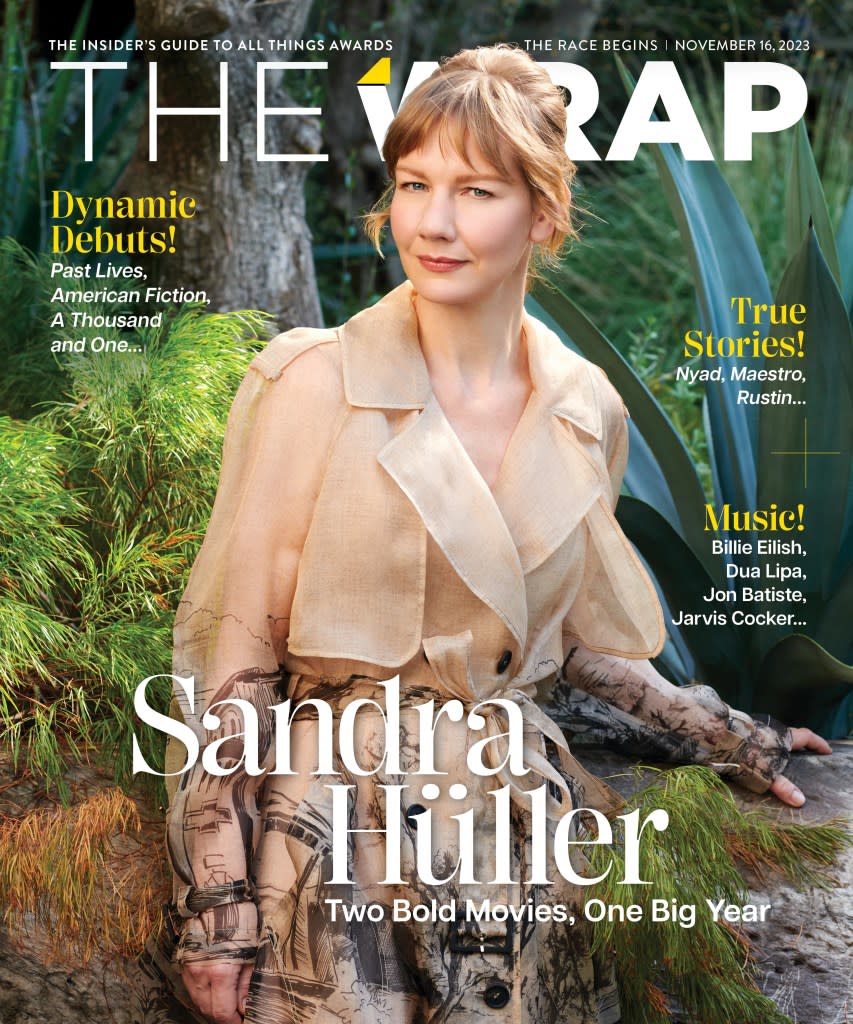Roger Ross Williams Had to Prepare ‘Cassandro’ Real-Life Subject for Artistic License: ‘It Wasn’t a Documentary’
This story about “Cassandro” first appeared in the Race Begins issue of TheWrap magazine.
Director Roger Ross Williams has lived with the story of Saúl “Cassandro” Armendáriz for seven years, ever since he made the 2016 short documentary Man Without a Mask, itself adapted from the 2014 New Yorker story focused on the life of the “exotico” wrestler who made his mark on lucha libre for his flamboyant life both in and out of the ring. “I fell in love with Cassandro because it’s such an inspiring story,” Williams said. For the filmmaker, it was a story that called for a highly visual level of storytelling to capture Cassandro’s personality and the profession he inhabits.
Williams, who had predominately worked in the documentary space up until this film, saw the opportunity to make Cassandro as a way to challenge himself. “I wanted the freedom to be able to tell the story in a scripted format because I felt that I could have complete control over every aspect of the story,” he said. “I was like, ‘Okay, I’ve never made a scripted film. I don’t even know how to write a script, but I’ll figure it out.’” The one thing he did know was that he wanted Gael Garcia Bernal to play the title character.
Before tackling the script, Williams and co-writer David Teague “immersed ourselves” in Armendáriz’s world. “We went around with Cassandro and we would just take notes, write down details of his life as he was talking to us,” Williams said. It also helped that he had his 2016 documentary that offered up viewpoints from others who knew Armendáriz, including his family. But that didn’t substitute for consulting with the real person. “It was spending time with him that sparked a lot of the ideas and vision that we had for the film,” Williams said.
But Williams had to deal with the challenges of telling a story with a subject who is very much alive, and that took some finesse. “It was important to help Cassandro understand that this is not a documentary,” he said, recalling that he told the wrestler, “There will be fictionalized scenes in this movie that did not happen to you.” For Williams, it was about simplifying Armendáriz’s story while allowing its complexity to shine in Gael García Bernal’s performance.
A prime example of artistic license came when depicting the death of Armendáriz’s mother, Yocasta (Perla De La Rosa). In the finished film, Yocasta dies off-screen while her son is in a match. In reality, she died while crossing the street, carrying her oxygen tank, after leaving a nightclub (a version of which is depicted in a different scene in the film). “That scene would have been so over-the-top in the movie,” he said. “It would have felt almost like camp.” Factoring in the extravagance of lucha libre to begin with, an off-screen death was more of an effective gut punch for the character.
Williams credits one of his advisors from the Sundance Screenwriting Lab, Douglas McGrath, for understanding what the emotional core of the script was. “He said to me, ‘This is a deeply emotional story of the love between a mother and a son, their isolation and loneliness,’” Williams said. And it certainly affected the real Armendáriz when he saw the finished film for the first time in an El Paso theater.
“We were a nervous wreck,” Williams said about showing the real-life subject the film. “It was the most incredible screening of my life because the movie started and (watching) the scene with his mother he screams out ‘Mama, Mama!’ He said we got his mother perfectly.”
Read more from the Race Begins issue here.

The post Roger Ross Williams Had to Prepare ‘Cassandro’ Real-Life Subject for Artistic License: ‘It Wasn’t a Documentary’ appeared first on TheWrap.

 Yahoo News
Yahoo News 
